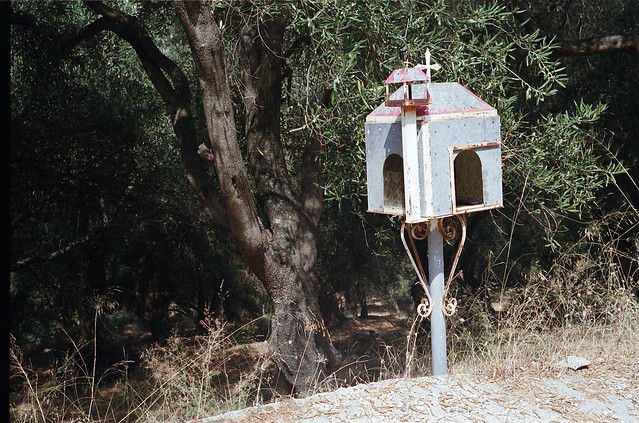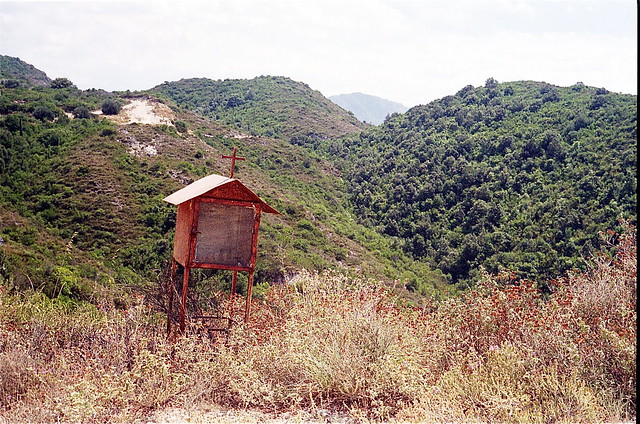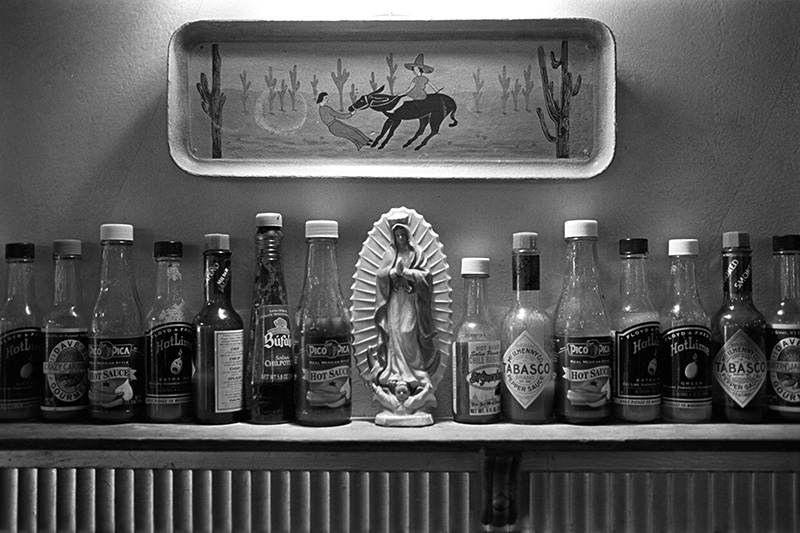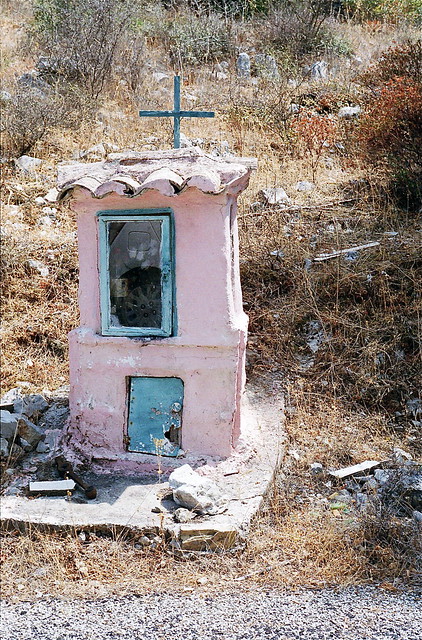robklurfield
eclipse
Paul, very, very true.
What I was aiming for here is the often odd junction that we form here in the US (and certainly in other places, too) with visual imagery combining religious symbolism with decidedly non-religious things. It creates some ironic, funny, weird juxtapositions. Consider the notion from the song "Plastic Jesus" that having a little statuette on one's dashboard would keep you safe when driving too fast.
One must admit that we have a special ability sometimes to add tackiness to our roadside religious displays (actually, too almost any kind of roadside display). somehow a "Jesus Christ" gas pump just doesn't match up with a finely wrought statue or simple cross. I think there's something peculiarly, though not uniquely American, about how we -- some of, not all of us -- don't think twice about odd mixes of commerce and religion. A Jesus gas pump strikes me as just plain weird. It neither treats the figure of Christ (the historical or theological Christ) with proper reverence (remember that I am the nonbeliever here), nor does it pump any extra octane into that Ethyl.🙂 (Or does it???)
And, we Americans do seem to have a very special relationship with the road. I think it must have an awful lot do with being such a young country that grew up, coming into its maturity, by building superhighways and endless strip malls. Somehow, that all got stirred up with intense religious fervor that Americans embrace in the public sphere.
In some parts of the world and in some religions, putting the name or image of a prophet or messianic figure on something related to profit would get one into a heap of trouble and be considered blasphemous. Here, we seem to be okay with it.
Anyway, I'm no sociologist, historian, theologian, etc. Just an arm's length observe with poor eyesight.😀
I thought the "Jesus Bus" to be a wonderful depiction of the intensity of one man's fervor for his beliefs. The bus is a rolling version of the bottle of Dr. Bronner's Magic Soaps. If you're not familiar with these, check out a link. The bottles are quite remarkable. Bronner's family, German Jews, have been in the soap business for 150 years. Emanuel (Emil) Heilbronner used his soap bottles as metaphorical soapboxes from which he preached his philosophy. If you haven't seen a label, it's a must read. Very ecumenical. The soaps are actually not bad. Here's a link to a label:
http://www.drbronner.com/pdf/drbronner_32oz_Pep.pdf
I see the rolling 18-wheel chapel as a really practical solution to a challenge for the worshipful itinerant who drive for a living (though my own read on this is that the truly, intensely faithful can live their faith anywhere, not needing a special space to do it). I mean no value judgments in any of this.
We are obviously not the only place in the world or culture that takes our religion to the streets. I think humans the world over have more things in common than we realize; we simply act them out in different ways.
What I was aiming for here is the often odd junction that we form here in the US (and certainly in other places, too) with visual imagery combining religious symbolism with decidedly non-religious things. It creates some ironic, funny, weird juxtapositions. Consider the notion from the song "Plastic Jesus" that having a little statuette on one's dashboard would keep you safe when driving too fast.
One must admit that we have a special ability sometimes to add tackiness to our roadside religious displays (actually, too almost any kind of roadside display). somehow a "Jesus Christ" gas pump just doesn't match up with a finely wrought statue or simple cross. I think there's something peculiarly, though not uniquely American, about how we -- some of, not all of us -- don't think twice about odd mixes of commerce and religion. A Jesus gas pump strikes me as just plain weird. It neither treats the figure of Christ (the historical or theological Christ) with proper reverence (remember that I am the nonbeliever here), nor does it pump any extra octane into that Ethyl.🙂 (Or does it???)
And, we Americans do seem to have a very special relationship with the road. I think it must have an awful lot do with being such a young country that grew up, coming into its maturity, by building superhighways and endless strip malls. Somehow, that all got stirred up with intense religious fervor that Americans embrace in the public sphere.
In some parts of the world and in some religions, putting the name or image of a prophet or messianic figure on something related to profit would get one into a heap of trouble and be considered blasphemous. Here, we seem to be okay with it.
Anyway, I'm no sociologist, historian, theologian, etc. Just an arm's length observe with poor eyesight.😀
I thought the "Jesus Bus" to be a wonderful depiction of the intensity of one man's fervor for his beliefs. The bus is a rolling version of the bottle of Dr. Bronner's Magic Soaps. If you're not familiar with these, check out a link. The bottles are quite remarkable. Bronner's family, German Jews, have been in the soap business for 150 years. Emanuel (Emil) Heilbronner used his soap bottles as metaphorical soapboxes from which he preached his philosophy. If you haven't seen a label, it's a must read. Very ecumenical. The soaps are actually not bad. Here's a link to a label:
http://www.drbronner.com/pdf/drbronner_32oz_Pep.pdf
I see the rolling 18-wheel chapel as a really practical solution to a challenge for the worshipful itinerant who drive for a living (though my own read on this is that the truly, intensely faithful can live their faith anywhere, not needing a special space to do it). I mean no value judgments in any of this.
We are obviously not the only place in the world or culture that takes our religion to the streets. I think humans the world over have more things in common than we realize; we simply act them out in different ways.
the phenomenon is hardly confined to the u.s. as already has been shown; it stretches across the americas and around the world ...














